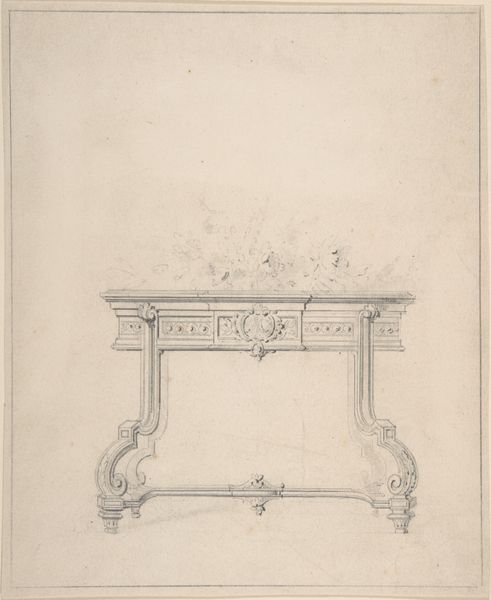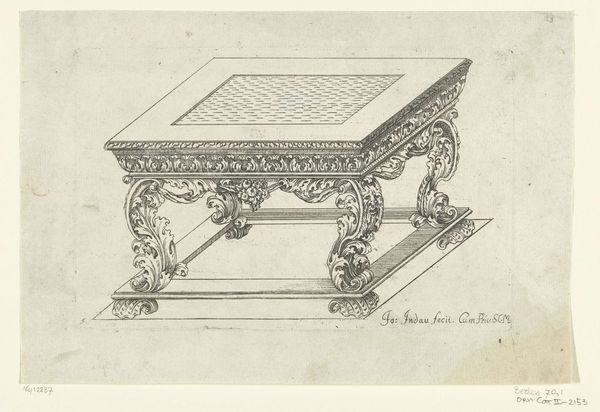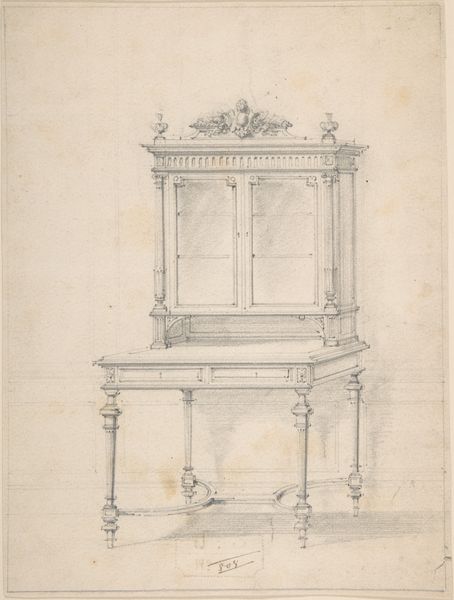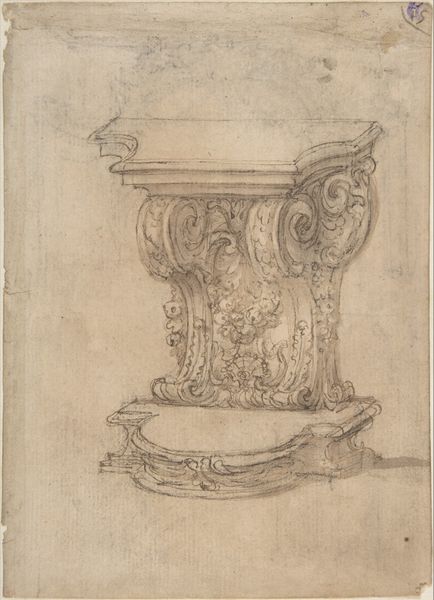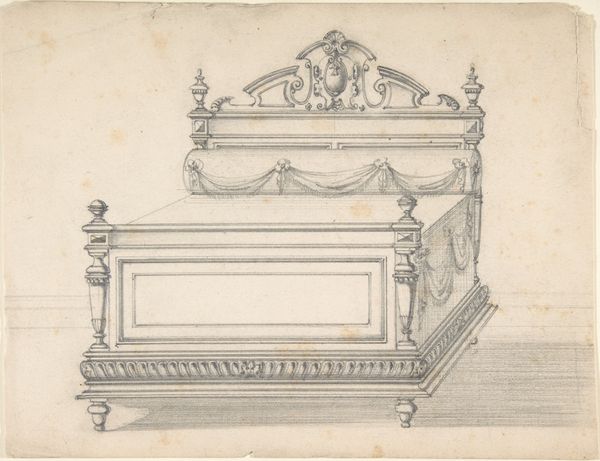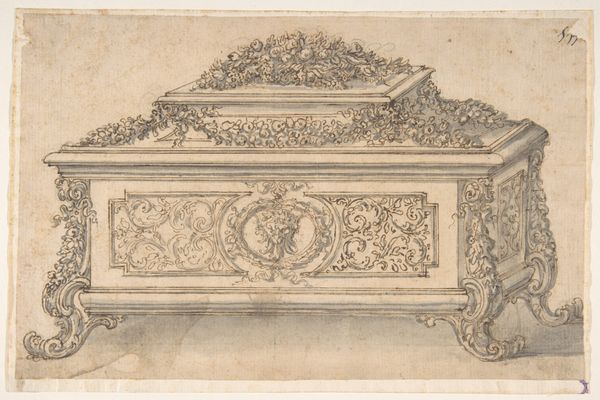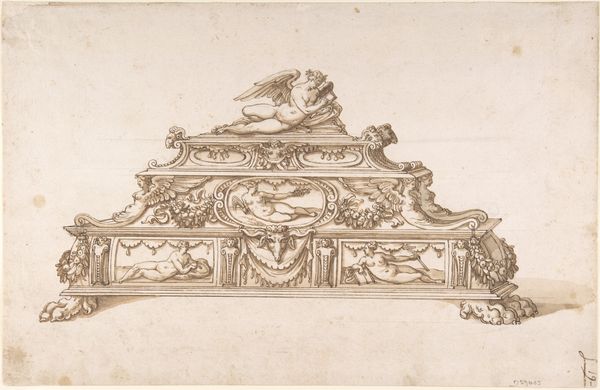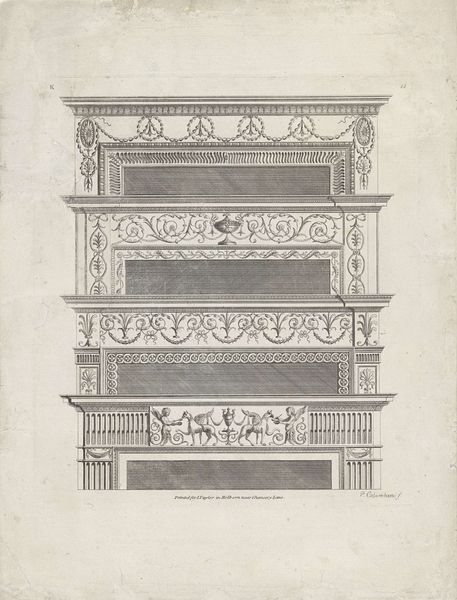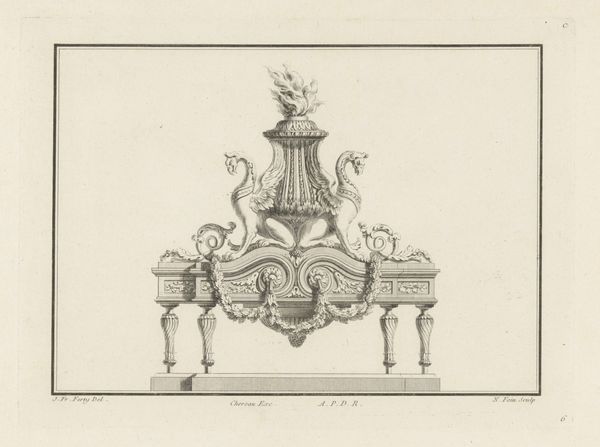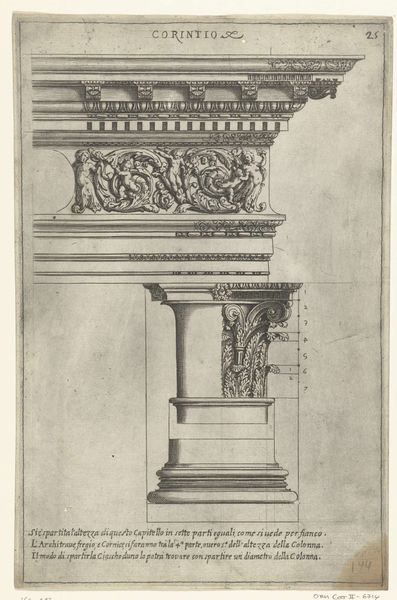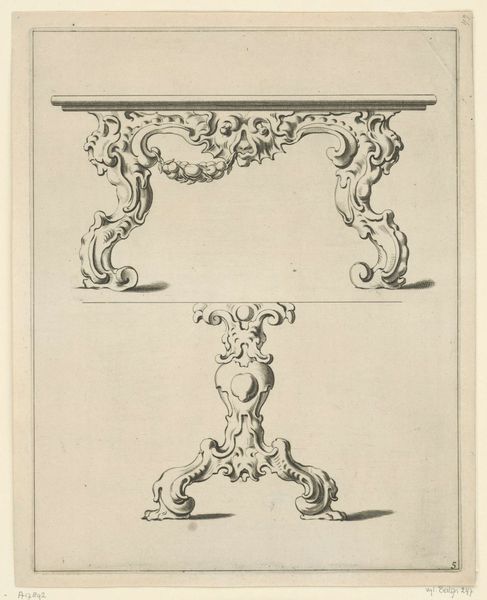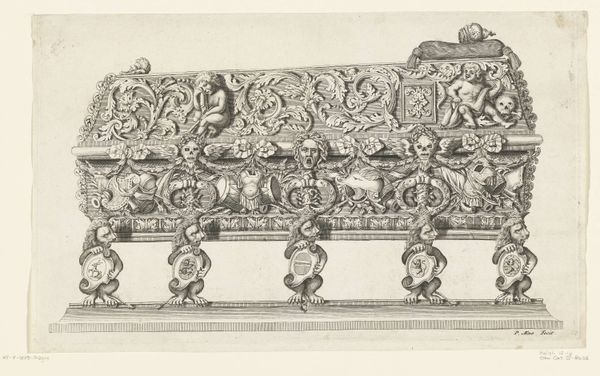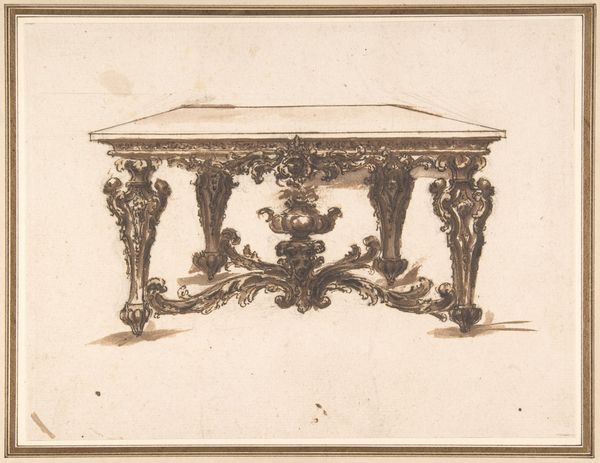
engraving
#
baroque
#
old engraving style
#
form
#
geometric
#
line
#
decorative-art
#
engraving
Dimensions: height 158 mm, width 226 mm
Copyright: Rijks Museum: Open Domain
Editor: This is “Kistje met deksel en ringen aan de zijkant,” or “Small Box with Lid and Rings on the Side,” an engraving by Hendrik van der Borcht II, dating to between 1614 and 1654. It has a really formal, almost imposing feel to it, despite being just a small box. How do you interpret this work? Curator: Beyond its decorative function, this box design embodies the 17th century Dutch obsession with trade and wealth accumulation. It isn’t just a container, it's a statement. Look at the lion's heads. What do they signify to you within a colonial context? Editor: I suppose they could symbolize power and dominance. It feels like a kind of... visual flex. So, the box becomes less about storage and more about displaying status? Curator: Exactly! These ornate designs weren't for everyone. Who do you think this imagery would have appealed to, and what values did it reinforce? Editor: Well, likely wealthy merchants, perhaps reinforcing ideas of elitism and maybe even justifying colonial exploitation through symbols of power. Curator: Precisely. And the seemingly innocent geometric form is a rigid structure reminiscent of trade routes, or a patriarchal hierarchy that dictates whose wealth gets locked away. These decorative boxes acted as emblems of the system, reflecting and upholding unequal distribution of resources during this historical period. Editor: That’s a very powerful way to see it. I hadn’t considered how much it speaks to broader structures of power. I'll certainly look at these decorative objects with new eyes. Curator: It is an important point to remember that these artworks aren't made in vacuums. Always keep a dialogue with the world around it.
Comments
No comments
Be the first to comment and join the conversation on the ultimate creative platform.

